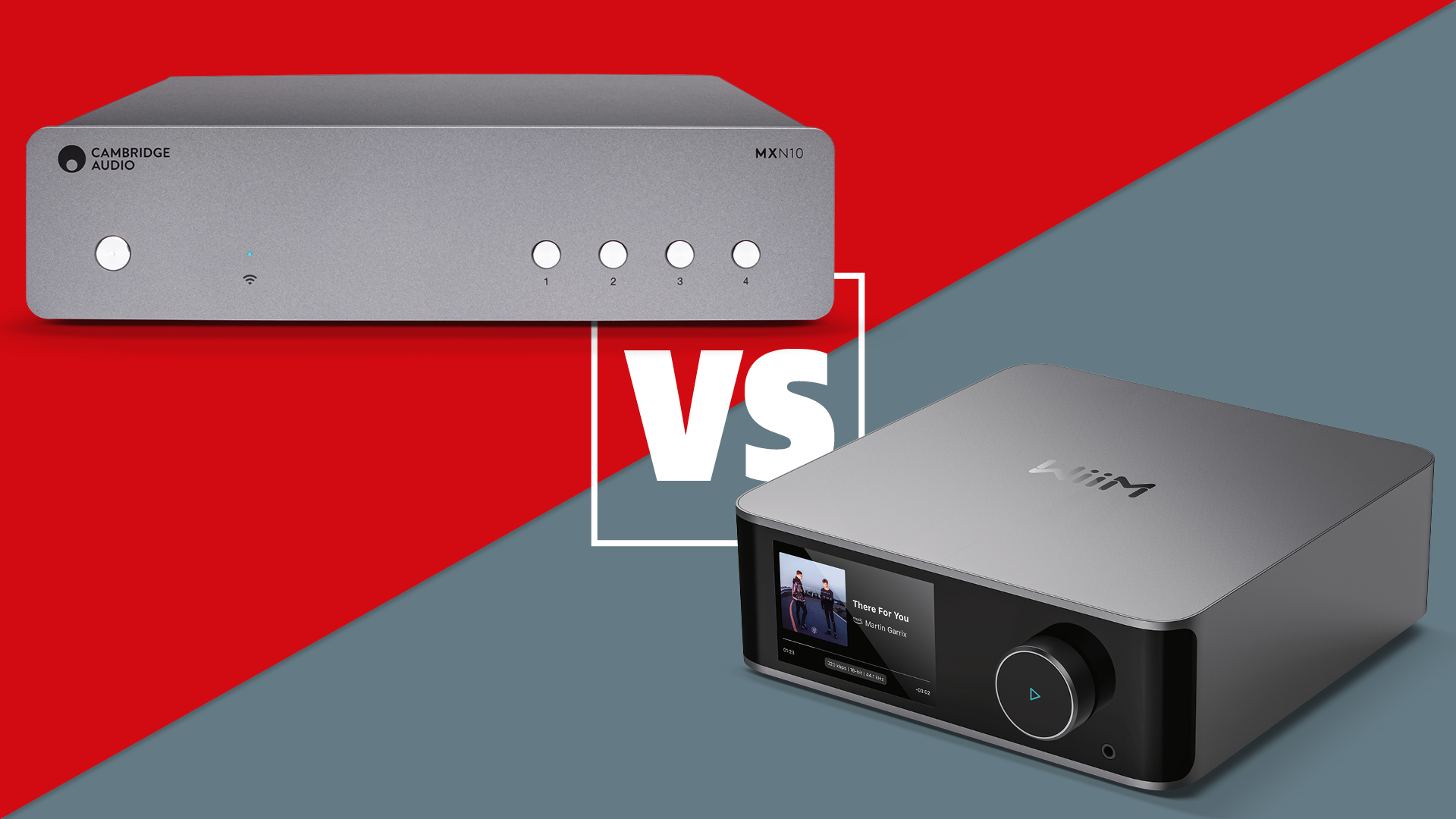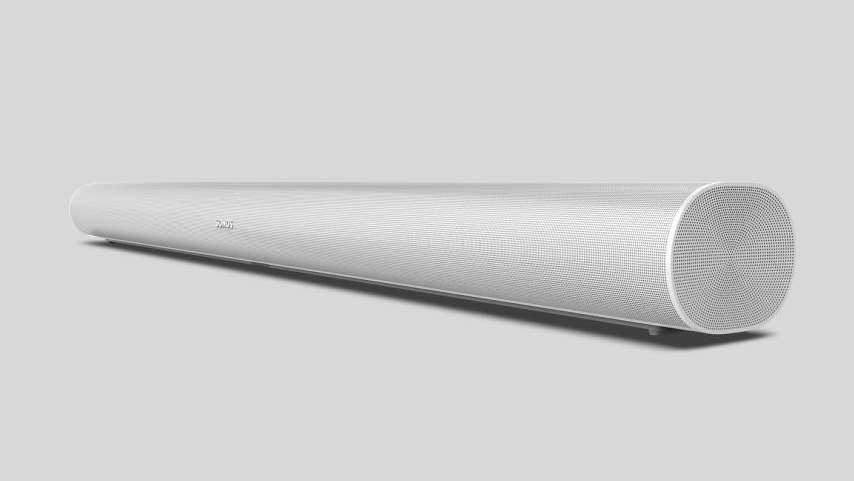
There are now several soundbars in Sonos's official multi-room family tree, including the Sonos Beam – now superseded by Beam (Gen 2) – the Sonos Arc. The Arc brought with it Dolby Atmos surround sound - the first time this had been available on Sonos products.
But the original Sonos Beam remains a decent option. It's significantly smaller and cheaper than the other Sonos TV speakers yet offers the same array of streaming and multi-room features, plus the crucial upgrades of voice control and an HDMI connection.
You're options don't end there, though. The Arc replaced the Playbar soundbar and the Playbase soundbase, both of which should be considered if you spot one with a big discount. Refurbished models are usually listed on the Sonos website, too.
So which Sonos soundbar is best for you? Read on for our thorough comparison of the features, specs, dimensions and sound – a 'Sonos-off' if you will – plus today's very best Sonos soundbar deals.
- Eager to splash the cash? Here's today's best Sonos deals
Build and design
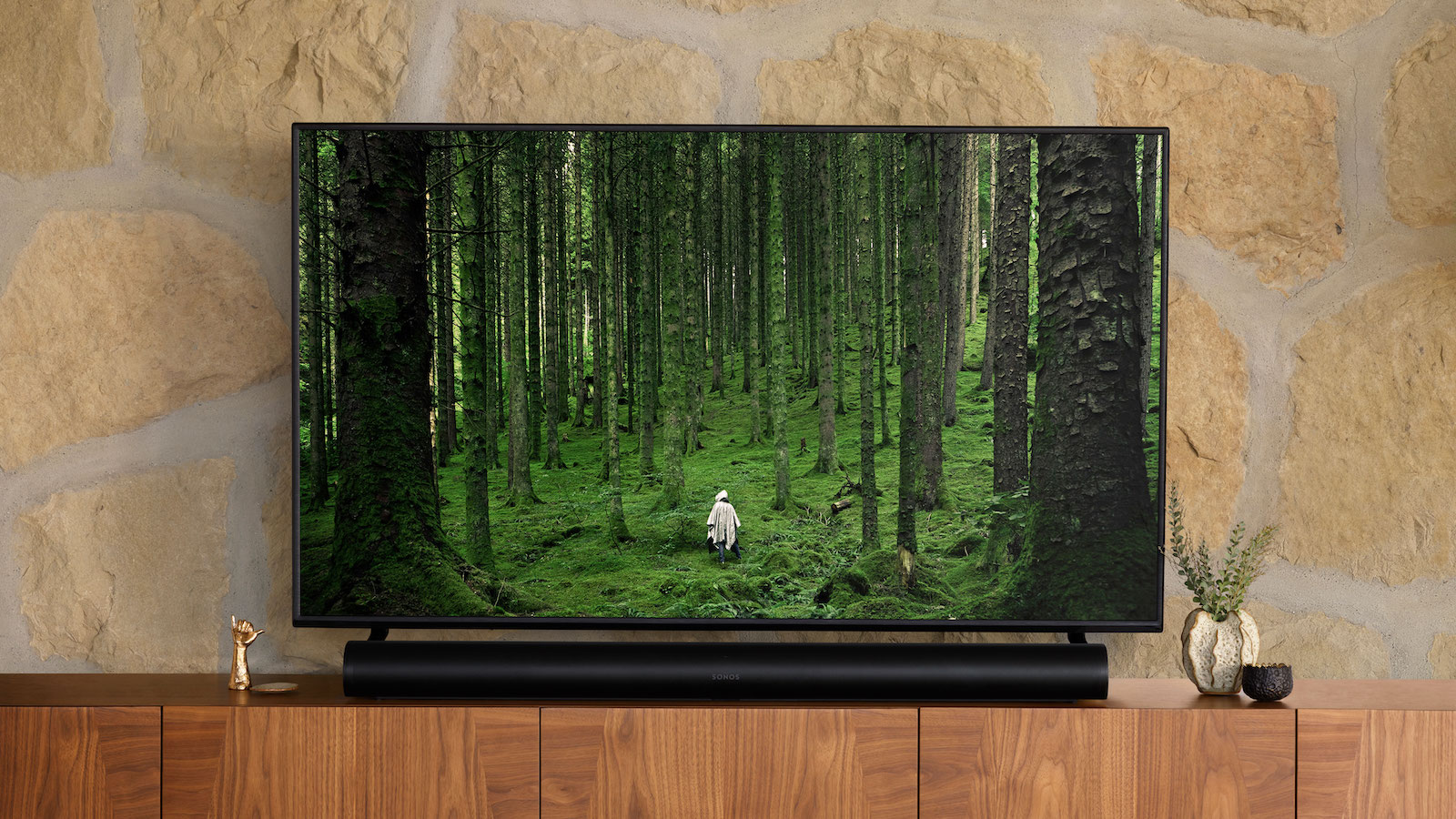
The Sonos Arc is specifically designed to partner with the bigger TVs that are becoming more and more popular, with its width measurement of 114cm making it just a bit wider than a typical modern 49-inch TV. That also makes it significantly wider than the Playbar (90cm).
Unlike the Playbar, the Arc can't be positioned on either its front or side – it's oriented the same way regardless of positioning (the bespoke Sonos wall-mount is a £69 ($79, AU$99 optional extra), and even automatically adjusts its frequency response accordingly.
The curvy design of the Arc makes it look rather svelte in pictures, but it is a not-insignificant 8.5cm tall. It has a touch-sensitive play/pause 'button' and two context-sensitive touch panels that you'll most often use to control volume. There's also a microphone button and a single LED that indicates whether the Arc is or isn't listening for Alexa or Google Assistant voice commands.
The full Sonos Arc dimensions are 8.7 x 114 x 11.6cm (HWD), or 3.4 x 45 x 4.5 inches, and it weighs 6.25kg (13.78lbs).
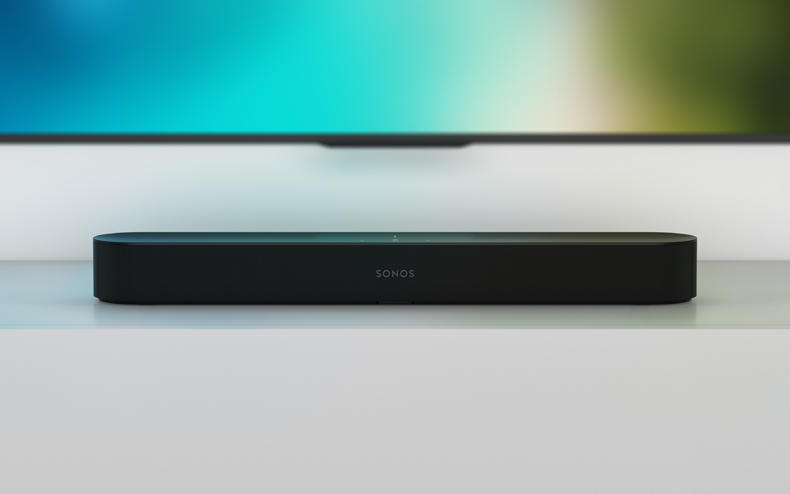
The first-generation Beam is the smallest of Sonos’s TV speakers by quite some margin. Measuring 65cm wide, 10cm deep and 7cm tall, it's easy to find a spot for under or in front of your TV.
Weighing just 2.8kg, the Beam will be less of a stress on your wall if you decide to wall-mount too, the bracket for which costs £59 ($59, AU$89).
Not only is it smaller and lighter, but we think the Beam also looks prettier than the Playbar and Playbase, though the Arc may give it a run for its money.
Minimalist styling is once more the name of the game, but the little speaker’s elongated pill shape and mesh wrap combine to make something that looks just a little bit classier and more stylish.
- Sonos Beam Gen 2 vs Sonos Beam Gen 1
- Going all-in? The best Dolby Atmos soundbars
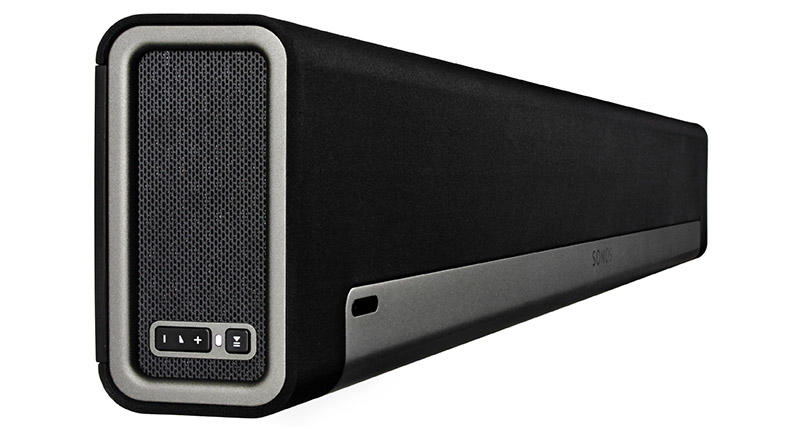
The Playbar is arguably the least attractive of the four devices, with its angular design looking a little outdated compared to the rounded panels of its newer siblings.
It’s also in many ways an awkward design. At 90cm wide and weighing 5.4kg, it’s big and heavy. It’s about as wide as a 43-inch TV, and wall-mounters will need to be fairly sure about the strength of the wall and fixtures they use. The official Playbar wall mount (£25, $39, AU$60) is cheaper than that of the Beam, while some buyers have found they need no bracket at all.
Not wall-mounting the Playbar makes its shape even more awkward. The device’s silicone feet are on what would be the back panel against a wall, and this orientation makes the Playbar less tall and therefore less likely to obstruct a TV behind it.
And even if it does block your telly’s IR receiver, a built-in repeater ensures commands from your remote get through. The problem is that in this orientation, the Playbar’s drivers are largely firing upwards, leading to a sound delivery that’s tall but lacking in directness.
To get the best sound from the Playbar, you need to stand it on its edge – which then runs the risk of obstructing your TV screen. No such issues with the new Sonos Arc.
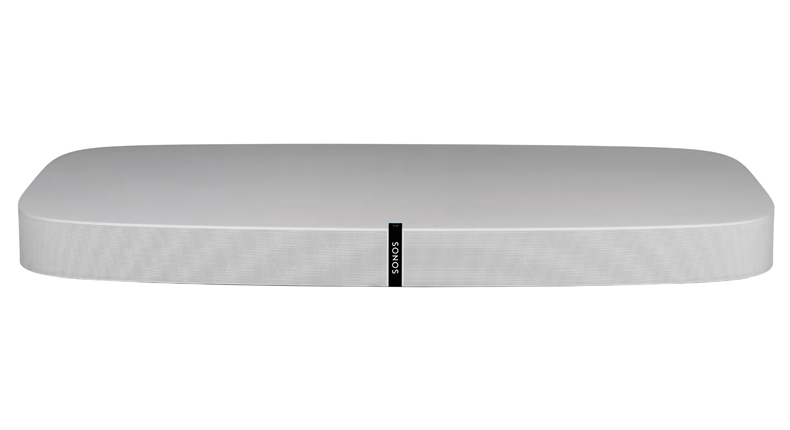
If you’ve got no intention of wall-mounting, the obvious course of action is to buy the Playbase. As the name suggests, this is a soundbase rather than a soundbar, which means it’s designed to support a television – although some TVs with feet at either end will actually straddle it rather neatly.
That’s made possible by the Playbase’s height. Measuring just 5.8cm tall, it is much wider and deeper, giving the impression of a design that puts function before form. It’s solidly built, and the precisely machined holes that cover the device for maximum air control are pretty cool.
The four Sonos TV speakers are available in black or white and the Arc, Beam and Playbase have capacitive touch controls. As the oldest of the bunch, the Playbar makes do with older-style, physical buttons.
- Everything you need to know about Sonos wireless speakers
- How to choose the right soundbar for you
Features
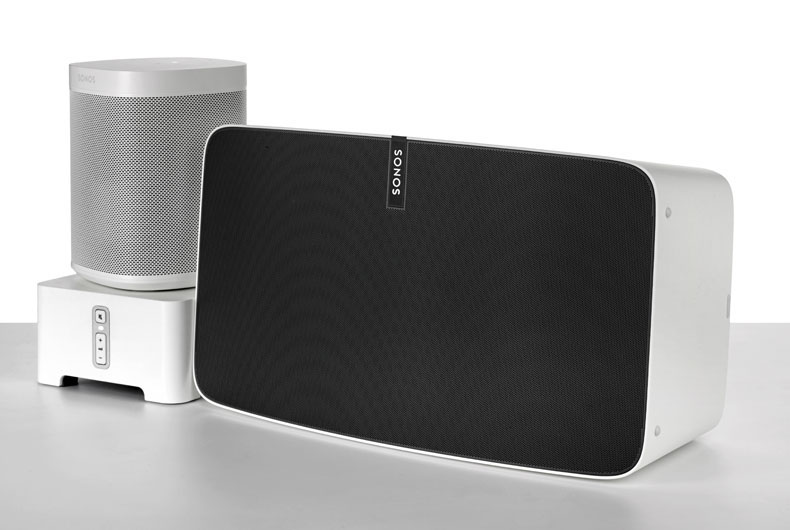
The core features of Sonos products are there regardless of which of these Sonos soundbars you buy.
Support for practically every music streaming service under the sun, the ability to work with other Sonos speakers in a multi-room set-up, and the option to add two of the company’s music speakers (e.g. the Sonos One or One SL) as surrounds and/or the Sub or Sub Mini for extra bass are all here.
The differences in the four products are mostly due to their varying ages, with the Arc and Beam upping the feature ante and being much smarter than their forebears.
The key addition on the Arc is Dolby Atmos surround sound. The other soundbars stop at Dolby Digital 5.1 as the best TV audio option available regardless of which you choose.
Both the Arc and Beam also offer voice control, with support for Amazon Alexa and Google Assistant, plus some Apple Siri commands using an iPhone or iPad.
- Smarten up your home with the best Alexa speakers
- Our pick of the best Google Assistant speakers
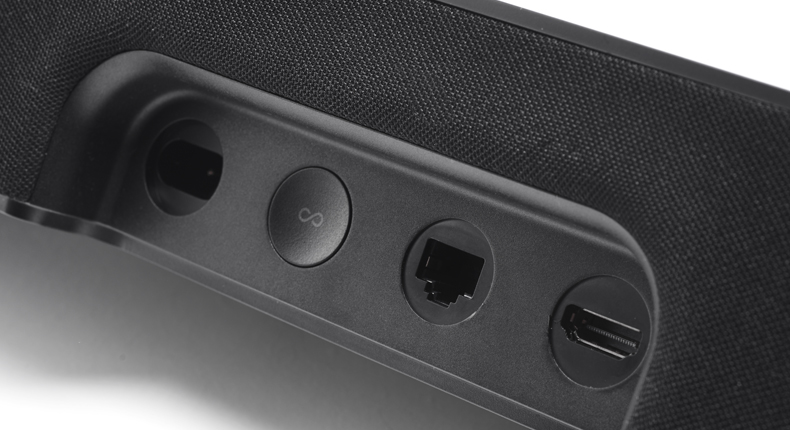
Unlike the Playbar and Playbase, which rely on an optical connection to get sound from your TV, the Arc and Beam use HDMI ARC (there is an optical adapter too). The Arc also adds eARC support, to ensure it can handle higher quality Dolby Atmos signals from TVs that can output it.
HDMI ARC and eARC also add an extra layer of cooperation between speaker and (HDMI CEC-compatible) telly, particularly with voice control.
Turning on your TV using Alexa is occasionally genuinely useful, and you can introduce deeper integration (playing particular shows via voice command, for example) by adding a Fire TV device.
You can add Alexa to the Playbar or Playbase (or any Sonos speaker) by adding an Amazon Echo device such as the Echo Dot to your network, but this isn’t nearly as neat or as functional.
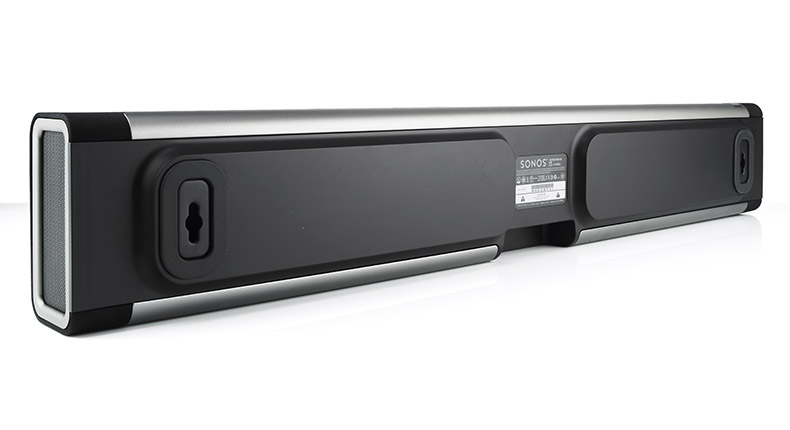
The Arc, Beam and the Playbase have AirPlay 2 support, bringing with it the ability to create multi-room systems with speakers from multiple brands. You can now have a Sonos Beam in the lounge, Apple HomePod in the kitchen and a Naim Mu-so Qb 2 in the bedroom, all playing the same music, thanks to AirPlay 2.
Unfortunately, the Playbar, won’t be getting AirPlay 2 support at any point. That could be a major consideration for some.
With the introduction of the Sonos S2 app and software update all four speakers gained support for high-res audio at 24-bit, 44.1/48kHz for FLAC/ALAC from local music libraries, network drives or streaming services.
Sound
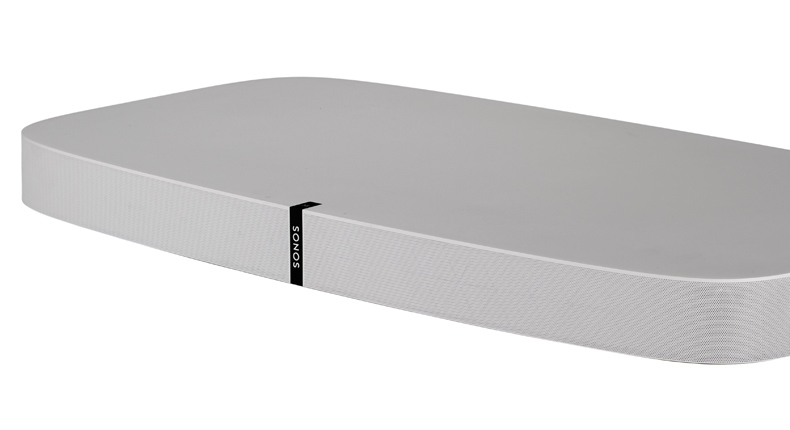
The different shapes and sizes of these four speakers means there are stark differences in the quantity, type and arrangement of the drivers in each.
The Sonos Arc has 11 Class D digital amplifiers that power 11 custom drivers. Eight of those drivers are elliptical woofers evolved from those in the Beam (four along the front, two on top and one in each end), while the other three are silk-domed tweeters that are all built into the front but with two firing diagonally into the room.
Sonos refers to the Arc's arrangement as 5.0.2, which might initially seem a little confusing but makes more sense when you think of the soundbar as attempting to replicate the soundfield of a five-channel surround sound system with no subwoofer and two height speakers. That being said, you can add a Sonos Sub if you want.
Unsurprisingly, given its relatively diminutive dimensions, the Beam has the fewest drivers, with one tweeter and four full-range, elliptical woofers working with three passive bass radiators.
The bigger Playbar has nine, individually amplified drivers: three tweeters and six midrange drivers. The Playbase has the same number of tweeters and mid-range drivers as the Playbar, but also has a separately amplified, innovatively S-shaped woofer for its bass frequencies.
Given those differences in the drivers, it’s impressive that a clear Sonos sonic signature runs through the range. It’s clear and balanced, with good rhythmic sense, plenty of punch and a natural midrange. There’s an authenticity to the presentation from Sonos products that many rivals struggle to match.
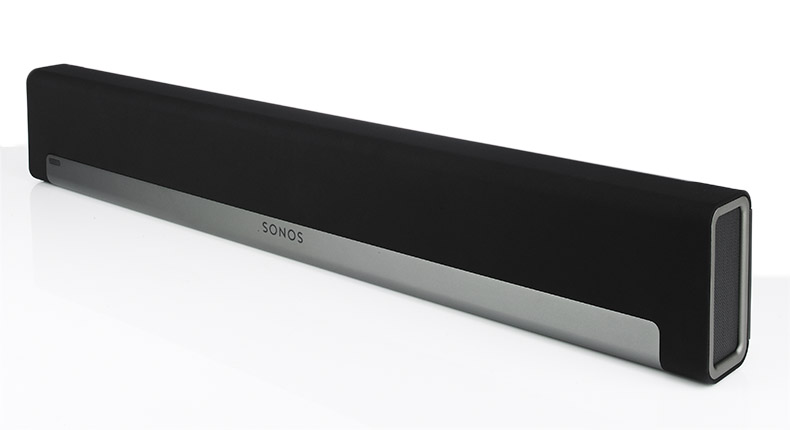
The Atmos-toting Sonos Arc uses Dolby's 3D sound technology to great effect and, with a recent software update adding functionality to adjust height volume via its mobile app, it delivers one of the most convincing Atmos presentations of any soundbar we’ve heard. It's also the most musical of the quartet, capable of handling big dynamic shifts without breaking a sweat, and conveys plenty of subtle texture. There's a slight lack of directness to music, but that's really our only criticism of the Arc's sound.
The Beam sounds exceptionally spacious and weighty for a device its size, stretching right across the front of a small- to medium-sized room and delivering bass with a depth and authority that’s entirely unexpected – as is the volume it’s capable of producing. The Beam (Gen 2) – a 2022 What Hi-Fi? Award-winner – sounds better still, so keep it in mind if your budget stretches.
The Playbar is weightier, richer and more authoritative than the Beam. It will go even louder and is capable of filling even the largest of rooms. It’s little surprise that this is a bassier delivery than that of the Beam, but that it also goes deeper than the Playbase is unexpected. However, a slight artificiality to the Playbar’s bottom end suggests it’s having to work hard to compensate for its comparative lack of physical volume.

And while the Playbase doesn’t go as deep as you might expect, the integration, tonality and naturalness of its bass frequencies is impressive. There’s a cohesion through the tonal spectrum that the Beam and Playbar can’t match.
But the Playbase, unlike its siblings, has an Achilles heel: bright, sibilant treble. The top end is really too aggressive, veering from sparkle to sharpness all too often and proving an irritation over time.
All four models are worth considering but if you're after the most complete surround-sound experience the Dolby Atmos-capable Arc is the obvious choice. Only the Sennheiser Ambeo Soundbar is better in this regard, and that costs significantly more.
Verdict
The addition of Dolby Atmos sets the Arc apart and it offers a superior surround sound experience than the existing models. It's more than just a soundbar, too, thanks to app- or voice-controls and access to practically every music streaming service.
If you're not bothered about Dolby Atmos, the choice between the Playbar and Playbase will largely be based on your needs – and availability. If you have your TV on a wall mount, then the Playbar makes more sense of the two. If your TV is on a stand, put it on a Playbase instead.
The Playbase is the weak link in terms of sound, with the treble spoiling what is otherwise an impressive presentation. On the other hand, the Playbar is a physically cumbersome and rather awkward proposition, and its styling and feature set are starting to show their age. The lack of AirPlay 2 will be a deal-breaker for some.
On balance, the Sonos Beam is the pick of the models here. In some ways, the first-gen Beam is obviously less sonically capable than the Playbar and Playbase, but its performance given its size and price is really exceptional. What’s more, its compact dimensions make it far easier to find space for and its more advanced features, voice control in particular, make it extra compelling. Don't forget: the newer Beam (Gen 2) adds support for Dolby Atmos.
If you can find them, the Playbar should still be considered by those with very large rooms, and the Playbase remains the right choice in specific set-ups, but for most people and most rooms, the Beam is the best Sonos soundbar solution in terms of value for money.
But if it's within budget, the Sonos Arc is the one to beat.
- Level up your home cinema with the best soundbars
- When to find the best Sonos speaker deals right now
- Expert advice on which is the best Sonos speaker?
Get the What Hi-Fi? Newsletter
The latest hi-fi, home cinema and tech news, reviews, buying advice and deals, direct to your inbox.

Joe is the Content Director for What Hi-Fi? and Future’s Product Testing, having previously been the Global Editor-in-Chief of What Hi-Fi?. He has worked on What Hi-Fi? across the print magazine and website for almost 20 years, writing news, reviews and features on everything from turntables to TVs, headphones to hi-fi separates. He has covered product launch events across the world, from Apple to Technics, Sony and Samsung; reported from CES, the Bristol Show, and Munich High End for many years; and written for sites such as the BBC, Stuff and The Guardian. In his spare time, he enjoys expanding his vinyl collection and cycling (not at the same time).
